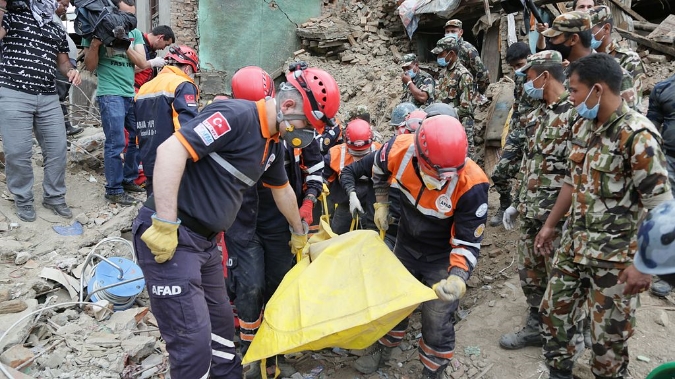What is Environmental History? A Brief Look at the Origins and Dynamics of the Field
/A second massive earthquake overwhelmed Nepal on Tuesday. The quake registered at a magnitude of 7.3, killed 96 people and injured more than 2,300. These unfortunate numbers add to the already high tolls from the magnitude-7.8 earthquake that hit on April 25. By comparison, the first quake killed more than 8,150 people, injured tens of thousands more and left hundreds of thousands homeless. Yet the treacherous circumstances may worsen, as relief efforts stretch beyond capacity and incoming monsoon rains loom large. The sheer power of nature in such circumstance provides a grim reminder of the fragility of life. Our thoughts and well wishes certainly go out to all persons affected. Today, considering how nature is central to all human affairs, we reflect briefly on the growth and evolution of environmental history.
Similar to many subfields of historical inquiry, environmental history grew out of the 1960s and 1970s as a response to wider social and cultural developments. As an area of study, the field found relevance with historians who began to assess the environmental movement as well as the general importance of nature to humans and human activity. Early approaches in the field asked questions about nature’s influence on us, but also how we in turn influence or impact nature. National parks, natural disasters, wildlife, and subsistence living formed many of the topical focus points for works published in the 1980s and 1990s.
Environmental history resulted from more than environmentalism, however. The field also became an important and diverse outlet for human activism. Some of its early practitioners found history to be a useful tool to explain contemporary circumstances, and how individually and collectively humans might take preventative measures to help ensure past mistakes do not resurface. Many such scholars, who purported/purport to activist writing, imbued/imbue a negative tone to suggest circumstances are growing increasingly worse. This is not to suggest that environmental history, as a field, is overwhelmingly negative in tone. In fact, more and more studies in the field consider a range of topics that avoid dichotomous or binary notions of good and evil.
Increasingly, researchers use environmental topics or simply nature itself as a point of entry to examine larger and more nuanced issues like politics, culture, gender, and science. Much work produced today speaks to topics that may not necessarily stand out as environmental per se—such as technology, cities, and consumerism. Indeed, many environmental historians argue that since all human experience finds interconnections with nature and the natural world, every topic can potentially fall under the umbrella of environmental history. Such notions are particularly relevant when considering that the environment is omnipresent. Even past environments that historians discuss are still often present in a modern context. Consider the military historian, for instance, who might visit a battlefield from the First or Second World War to gain a deeper insight into the logistical and environmental circumstances that faced the contemporary soldier. Alternatively, consider the urban historian who might visit a city to experience what is difficult to gain through images or words. In both cases, the research component of the historical process is highly artistic. Environment is a multitude of experiences, and so too is the practice of environmental history.
Environmental history is also highly interdisciplinary. Disciplines like geology, geography, anthropology, or a number of others are not only useful but also necessary in many cases for environmental historians to properly understand and engage with the many environmental characteristics that they study as subjects and objects of change. In this light, it might well be argued that of all historical subfields, environmental history is the most inclusive in its knowledge and methodological approach to the past.
If the emotions of having endured the horrifying earthquakes and the loss of family and friends were not enough, aftershocks unfortunately are keeping people on edge in Nepal and nearly everyone is too afraid to sleep indoors. “After the first quake, we were not prepared for a second one so big,” said Prime Minister Sushil Koirala to reporters after arriving in Charikot—the most-recent hardest hit district—by helicopter. “We need tents. Our people need shelter. With the rainy season, it will be difficult for people to survive in the open,” he added.
The devastating circumstances of a natural disaster force humans to work together in a manner that has the ability to extend beyond what is regularly thought possible. As relief efforts in Nepal stretch further beyond capacity, the collective endurance of the human condition will continue to be tested. Any lessons that are to be derived from such a horrific reality will, as they should, remain the focus of a later date. In this instance, we will seemingly learn as much about human life as we will the natural world.


